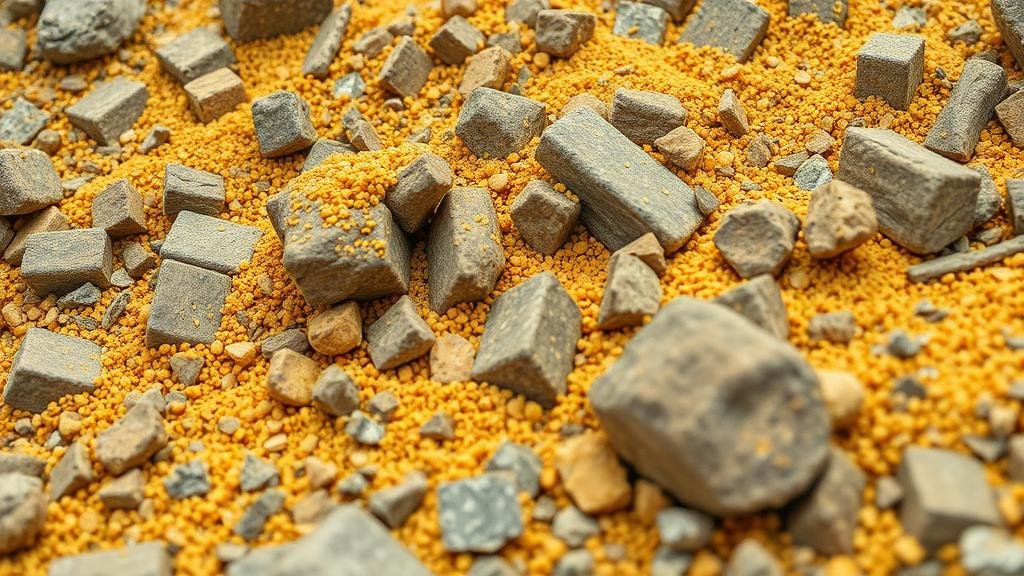The Role of Heavy Mineral Concentrates in Prospecting for Gold
The Role of Heavy Mineral Concentrates in Prospecting for Gold
Heavy mineral concentrates (HMC) play a crucial role in the exploration and prospecting for gold. These concentrates, which consist largely of minerals denser than quartz, can be indicators of gold deposits when analyzed effectively. This article will explore the significance of heavy mineral concentrates, their formation, analytical techniques, and their application in gold prospecting.
Understanding Heavy Mineral Concentrates
Heavy mineral concentrates are composed of various minerals with specific gravity greater than 2.9. Common minerals found within these concentrates include zircon, rutile, ilmenite, and, importantly, gold. Understanding their role begins with recognizing how they are formed and where they can be found.
Typically, heavy minerals accumulate in sedimentary environments, often as a result of weathering and erosion processes. These minerals can be deposited in stream beds, beaches, or sedimentary rock layers where they become concentrated due to their density relative to lighter mineral particles.
Formation and Concentration of Heavy Minerals
The formation of heavy mineral concentrates occurs through a series of geological processes:
- Weathering: Gold and other heavy minerals are liberated from their primary deposits through natural erosion.
- Transport: River systems and wind transport these heavy minerals, leading to their concentration in sedimentary basins.
- Deposition: Areas with lower energy environments, such as lagoons and deltas, often trap heavy minerals, leading to increased concentrations.
Also, geological events such as volcanic activities and tectonic movements can expose gold-containing rocks and contribute to HMC formation.
Analytical Techniques for HMC
The recovery and analysis of heavy mineral concentrates involve several key methodologies that enhance the prospects for identifying gold deposits. e include:
- Sampling: Systematic collection of sediment samples from various geological settings, particularly in areas suspected of containing gold.
- Gravity separation: Techniques such as panning, sluicing, and more sophisticated methods like shaking tables are used to separate heavier minerals from lighter ones.
- Mineralogical analysis: Utilizing techniques such as X-ray diffraction (XRD) and scanning electron microscopy (SEM) to identify the composition of the concentrates.
Through these analytical techniques, prospectors can effectively identify the presence of gold within these heavy minerals, thus guiding further exploration efforts.
Real-World Applications and Case Studies
The practical application of heavy mineral concentrates in gold prospecting has been exemplified in several successful mining operations. For example, the Rattlesnake Hills Gold Project located in Wyoming demonstrated the utility of HMC in discovering and quantifying gold deposits within a previously underexplored area.
By utilizing heavy mineral analysis, prospectors were able to locate significant HMC deposits, leading to confidence in the potential for more extensive gold mining operations. Plus, the historical Klondike Gold Rush provides an archetypal case where the analysis of riverbank sediments led to discoveries of astonishing amounts of gold in the Yukon Territory.
Challenges and Limitations
While heavy mineral concentrates are invaluable in gold prospecting, there are inherent challenges that prospectors must consider. e include:
- Sampling bias: Inadequate sampling can lead to the misrepresentation of heavy mineral concentrations.
- Environmental concerns: The disturbance of natural habitats during sampling and extraction processes may lead to ecological destruction.
- Economic viability: The costs associated with extraction and processing of HMC must align with the potential gold yields.
Actionable Takeaways
For geologists and prospectors eager to explore the utility of heavy mineral concentrates in gold prospecting, consider the following actionable takeaways:
- Conduct comprehensive research: Understand the geology and history of mining in the area under consideration.
- Use advanced analytical techniques: Employ modern technology to ensure thorough sampling and analysis of HMC.
- Acknowledge environmental impacts: Always consider and mitigate potential ecological damage during prospecting activities.
To wrap up, heavy mineral concentrates serve as essential indicators in the quest for gold. By leveraging the natural concentrations of dense minerals, prospectors can enhance their exploration efficiency and effectiveness, ultimately leading to successful mining ventures.



